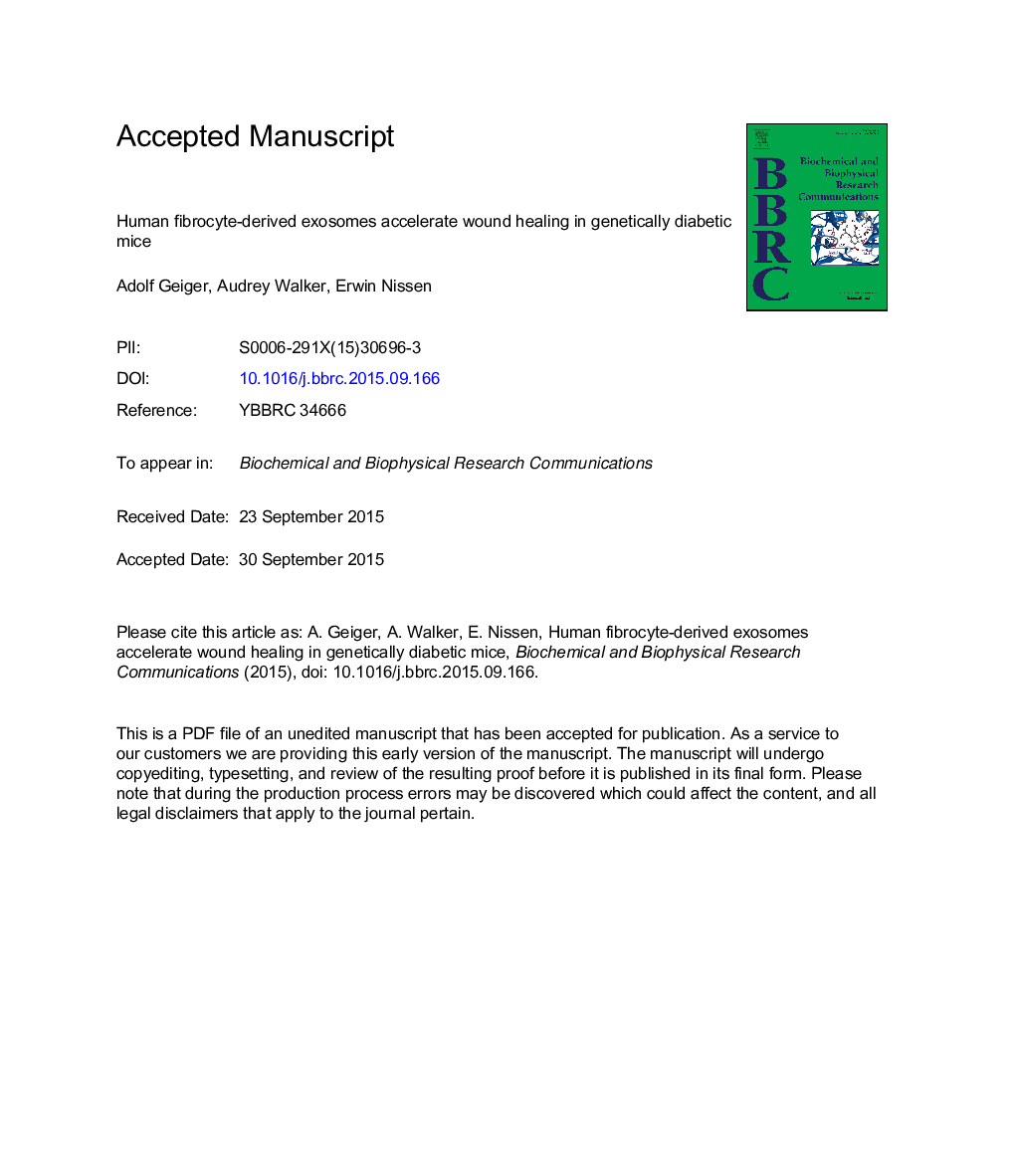| Article ID | Journal | Published Year | Pages | File Type |
|---|---|---|---|---|
| 10751159 | Biochemical and Biophysical Research Communications | 2015 | 29 Pages |
Abstract
Diabetic ulcers represent a substantial societal and healthcare burden worldwide and scarcely respond to current treatment strategies. This study was addressed to evaluate the therapeutic potential of exosomes secreted by human circulating fibrocytes, a population of mesenchymal progenitors involved in normal wound healing via paracrine signaling. The exosomes released from cells sequentially stimulated with platelet-derived growth factor-BB and transforming growth factor-β1, in the presence of fibroblast growth factor 2, did not show potential immunogenicity. These exosomes exhibited in-vitro proangiogenic properties, activated diabetic dermal fibroblasts, induced the migration and proliferation of diabetic keratinocytes, and accelerated wound closure in diabetic mice in vivo. Important components of the exosomal cargo were heat shock protein-90α, total and activated signal transducer and activator of transcription 3, proangiogenic (miR-126, miR-130a, miR-132) and anti-inflammatory (miR124a, miR-125b) microRNAs, and a microRNA regulating collagen deposition (miR-21). This proof-of-concept study demonstrates the feasibility of the use of fibrocytes-derived exosomes for the treatment of diabetic ulcers.
Keywords
STAT3COL3TSGPDGFTGFFCSHspMIRFGFExosomeα-SMAITSqPCRPBSDMEMDulbecco's modified Eagle's mediumWound Healingα-smooth muscle actinDiabetestransforming growth factorChronic woundfetal calf serumcytokeratinConditioned mediumplatelet-derived growth factorfibroblast growth factorPhosphate buffered salineFibrocytesignal transducer and activator of transcription 3MicroRNAType III collagenreal-time quantitative polymerase chain reactionHeat shock proteinthreshold cycleCol1Type I collagenReceptor
Related Topics
Life Sciences
Biochemistry, Genetics and Molecular Biology
Biochemistry
Authors
Adolf Geiger, Audrey Walker, Erwin Nissen,
